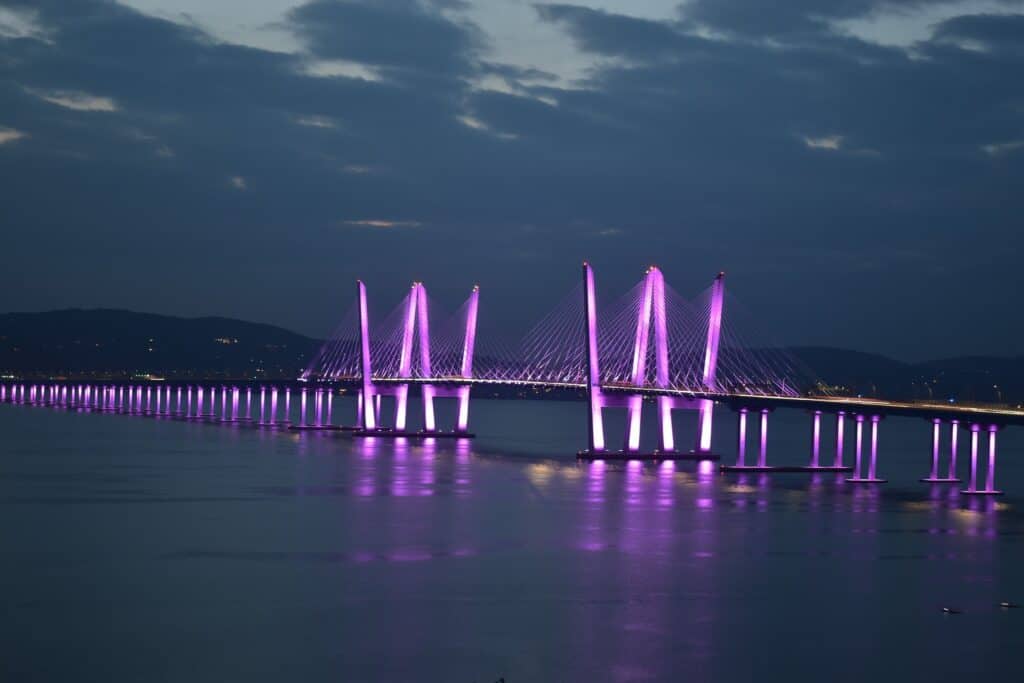
The New York State Thruway Authority (Thruway) has proposed a multi-year schedule of systemwide toll increases to begin in 2024, but a new report from State Comptroller Thomas P. DiNapoli identifies concerns with the proposal and urges the Thruway to first improve its operations and maximize non-toll revenues. DiNapoli’s office reviewed a decade of the Thruway’s finances and the toll hike proposal and found gaps in essential information necessary to evaluate the proposal.
“The Thruway Authority’s toll increase proposal comes at a time of extraordinary challenges for New Yorkers who are faced with rising costs for everything from food to shelter to gas,” DiNapoli said. “The Thruway should be more transparent with the public and disclose critical information, and identify and put in place all possible cost-savings and alternative revenue actions to minimize costs to drivers. Raising tolls should be the last option, and the Thruway has more work to do.”
In December 2022, the Thruway’s Board of Directors began the process of implementing a multi-year schedule of systemwide toll increases. The proposal calls for higher toll rates that would take effect on Jan. 1, 2024, and again on Jan. 1, 2027, for the highway system and barriers, and annually over four years beginning in 2024 for the Governor Mario M. Cuomo (Cuomo) Bridge. It also expands the rate differential between New York-issued E-ZPass users and all others. The toll increases are expected to grow toll revenue by 28.4%, or $1.9 billion, through 2031. The last toll hikes occurred in January 2021, when tolls were increased for the Cuomo Bridge, those paying through the mail and drivers from out-of-state, and again in January 2022 for the Cuomo Bridge.
DiNapoli’s report found that the Thruway’s finances and operations have been influenced by five key factors over the last decade:
- Implementation of cashless tolling and problems with Tolls by Mail (TBM) system. The Thruway’s implementation of cashless tolling was completed in November 2020. In 2022, Thruway leadership reported this modernization effort had not yet produced cost savings or efficiencies. In addition, problems including erroneous bills and significant fines and penalties prompted calls from state officials and the public for the Thruway to make sure the system was functioning as intended. An audit of the Thruway’s cashless tolls program was engaged by DiNapoli in April 2022 and is in progress.
- Sharp declines in traffic and toll revenues due to the COVID-19 pandemic. The COVID-19 pandemic saw a significant drop in traffic which caused toll revenues to decline 16.8% in 2020 before rebounding in 2021.
- Construction of the Cuomo Bridge. Between 2012 and 2021, $3.8 billion was spent on the bridge – more than half of the Thruway’s capital spending – with an additional $254 million budgeted through 2024. The state contributed $2.3 billion toward the cost of the Cuomo Bridge and other projects, but remaining capital costs associated with the bridge have been financed with Thruway debt.
- Debt management practices. Annual debt service on the Thruway’s currently outstanding debt is projected to grow to over $419 million by 2031, up 36.1% from 2022. This debt, along with additional borrowings proposed under the Thruway’s new 2023 to 2027 Capital Plan would cause debt service to grow nearly 61% by 2031.
- Shifting financial obligations. While the Thruway was intended to be mostly self-financing, it benefited from $2.3 billion in support from the state during the construction of the Cuomo Bridge. At the same time, however, the Executive pushed forth a toll freeze through 2020.
DiNapoli urged that before any tolls are increased, the Thruway address the following concerns:
- Resolve systemwide cashless tolling and TBM issues. Before asking system users to pay more, the Thruway should address its implementation problems and ensure that it has a clear and accurate forecast upon which to base its revenue estimates. The Thruway should also provide better documentation and disclosure of the assumptions used to develop the revenue and traffic projections that support its proposal.
- Perform a comprehensive assessment of operating needs and expenses to identify costs that may no longer be necessary. Since 2012, there has been a significant decline in the number of Thruway staff, while its reliance on procurements has increased. Reporting of key performance indicators is essential to identify opportunities to improve efficiency and transparency.
- Maximize non-toll revenue sources, including federal funding as well as revenue streams that could be generated from its assets and infrastructure. As shown by recent major increases in revenue from its fiber optic system, the Thruway should pursue alternative revenue streams from its service areas and gasoline stations, special permits, and other property.
Jennifer Givner, Thruway Authority spokesperson, responded with “New Yorkers have two ways to pay for their highways – tax dollars or toll dollars. The Thruway Authority is operated and maintained solely as a user-fee system, and is not supported by any federal, state or local taxpayer funding. Thruway toll revenues are projected to decline $240 million [over 2020- 2025] from levels prior to COVID. The Authority did not receive any portion of the funds New Yorkreceived as part of the federal Infrastructure Investment and Jobs Act nor any funds from other COVID Relief programs. The annual growth rate for Thruway operating budgets averaged less than two percent increases over the 2010 – 2022 period.
“Our toll revenue continues to go directly toward making the Thruway one of the safest highways in the nation. The toll adjustment proposal announced in December [when it takes effect] would be the first in 14 years for NY E-ZPass customers outside of the Mario Cuomo Bridge and toll rates on the Thruway will continue to be some of the lowest in the nation. We believe this modest proposal will begin to raise additional revenue to support the long-term financial needs of New York’s main transportation corridor and engine for economic activity. We would be happy to discuss this with the Office of the State Comptroller at any time.”





